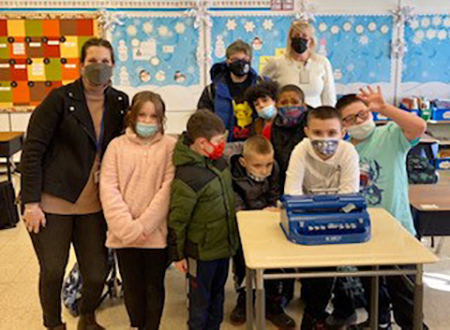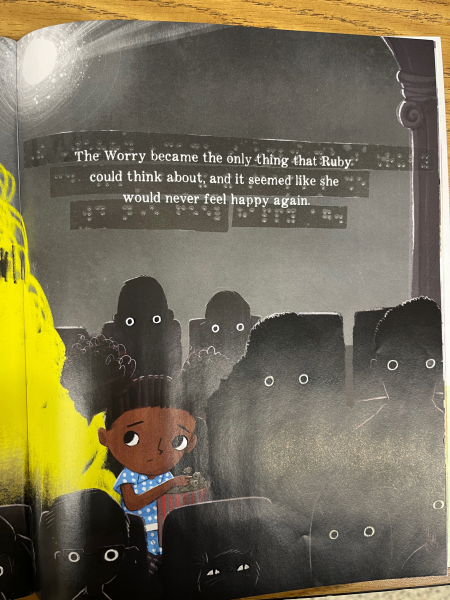
| Teacher of the Visually Impaired Karen Harrington takes time for a photo with some Webutuck students and staff members and the brailler she brought. |
Some Webutuck Central School District students were treated to a special day of hands-on learning about Braille from Dutchess BOCES’ Karen Harrington, a teacher of the visually-impaired (TVI).
impairments.It came about after Webutuck’s Director of Student Services and Curriculum and Instruction Jennifer Eraca saw an anchor chart featuring Louis Braille and the language he created for those with visual
“As a teacher, I did a chapter book on it and his story and it is a soft spot for me,” Eraca said, adding that she brought in a brailler writer to show her students.
With that memory fresh in her mind, she reached out to Dutchess BOCES and arranged for Harrington to visit the class.
“She came in with a brailler, all kinds of books and artifacts and demonstrated how students who are visually impaired learn to read and write,” Eraca said. “Webutuck students were able to touch, feel and learn the complexity and cost of braille and printing and the depth of how difficult it is to learn to read.”
Many of the students participating were able to celebrate their own strides in learning to read.
Harrington expected to arrive and present to a few students, but after Eraca met her at the office and escorted her to the class, she found 18 students and a bunch of adults.
“They set me up in the middle of the room and they explained to me what they had learned about him (Louis Braille) and then showed me they had made their names in braille using split peas.”
Students were shocked to learn that TVIs don’t know braille by feel. “We do it by sight,” she said.
“We talked about how it came into being and I showed them an example of how a student who is blind would start learning,” she said. Then, she gave them examples of how the student might advance over the course of their school career.
Harrington explained that visually impaired students learn the same material as other students, but they learn it differently.
Braille has two alphabets: Grade 1, which is the letters, and Grade 2, which has over 200 cells and groups of letters. For example, they learned the letter “T” stands for “That,” she said.
She also shared with students how much larger a braille book was compared to a chapter book they might read.
A fellow TVI provided Harrington with clear plastic braille overlays that are placed over written words so sighted students and braille readers can enjoy the same stories. The students in the presentation compared the two.
Harrington, who is in her eighth year at BOCES and her 12th as a TVI, said though she had never done anything quite like this, “It was fun.”
Eraca called the day, “A great experience. My hats off to Dutchess BOCES for making it happen.”
|
A book with a clear plastic braille overlay. |

